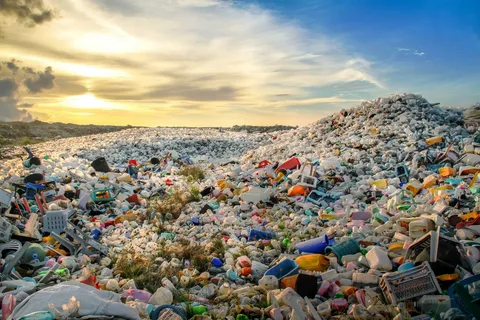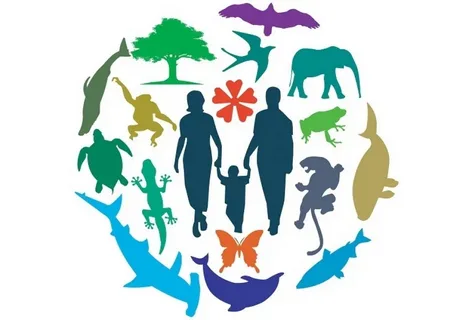Environmental Facts: Important and Surprising Insights
Understanding the environment is crucial for fostering awareness and promoting sustainable practices. This article presents a comprehensive compilation of important and surprising environmental facts that highlight the current state of our planet, the challenges we face, and the actions we can take to mitigate environmental degradation.
Water Resources: Scarcity and Misuse

- Freshwater Availability: Only about 3% of the Earth’s water is freshwater, and of this, approximately 2/3 is trapped in glaciers and ice caps. This leaves less than 1% of the world’s water available for human consumption and agriculture.
- Water Usage: Agriculture is responsible for approximately 70% of global freshwater withdrawals. This high demand for water in agriculture contributes significantly to water scarcity in many regions.
- Pollution: Over 80% of wastewater generated by society is discharged into the environment without adequate treatment, leading to severe pollution of rivers, lakes, and oceans.
- Groundwater Depletion: Over-extraction of groundwater for agricultural and urban use has led to a significant decline in aquifer levels globally. In some areas, such as California and India, groundwater depletion has reached critical levels, affecting water security and food production.
Waste Management: The Growing Crisis

- Plastic Pollution: The world produces over 300 million tons of plastic every year, with an estimated 8 million tons entering the oceans annually. This plastic pollution poses a severe threat to marine life and ecosystems.
- Landfill Waste: The U.S. is the largest trash-producing country, generating about 1,609 pounds of waste per person each year. Approximately one-third of landfill waste consists of packaging materials.
- Recycling Rates: Despite the benefits of recycling, only about 9% of plastic waste is recycled globally. This low rate exacerbates the plastic pollution crisis.
- Food Waste: Approximately one-third of all food produced globally is wasted, amounting to about 1.3 billion tons per year. This waste not only represents a loss of resources but also contributes to greenhouse gas emissions as food decomposes in landfills.
Biodiversity: The Importance of Conservation

- Species Extinction: The current rate of species extinction is estimated to be 1,000 times higher than the natural background rate due to human activities such as habitat destruction, pollution, and climate change.
- Deforestation: Approximately 18 million acres of forest are lost each year, primarily due to agriculture and logging. This deforestation contributes to biodiversity loss and climate change.
- Marine Biodiversity: Close to 90% of the world’s marine fish stocks are either fully exploited or overfished, leading to significant declines in fish populations and threatening the livelihoods of millions who depend on fishing.
- Invasive Species: The introduction of non-native species to ecosystems can disrupt local biodiversity. Invasive species can outcompete native species for resources, leading to declines or extinctions of indigenous flora and fauna.
Climate Change: A Global Challenge
- Greenhouse Gas Emissions: The concentration of carbon dioxide in the atmosphere has increased by over 40% since the Industrial Revolution, primarily due to fossil fuel combustion and deforestation. This rise in greenhouse gases is a major driver of climate change.
- Rising Temperatures: Global temperatures have risen by approximately 1.2°C since the late 19th century, leading to more frequent and severe weather events such as hurricanes, droughts, and heatwaves.
- Melting Ice Caps: The Arctic is warming at more than twice the global average rate, resulting in rapid ice melt and rising sea levels that threaten coastal communities worldwide.
- Ocean Acidification: Increased carbon dioxide levels are not only warming the planet but also causing oceans to absorb more CO2, leading to ocean acidification. This process threatens marine life, particularly organisms with calcium carbonate shells, such as corals and shellfish.
Air Quality: The Silent Killer
- Air Pollution Statistics: Over 91% of the world’s population lives in areas where air quality exceeds WHO guideline limits, contributing to approximately 7 million premature deaths annually due to air pollution-related diseases.
- Sources of Pollution: Major sources of air pollution include vehicle emissions, industrial discharges, and the burning of fossil fuels for energy. These pollutants can cause respiratory diseases, cardiovascular problems, and other health issues.
- Impact on Life Expectancy: In some regions, poor air quality can reduce life expectancy by several years, surpassing the health risks posed by smoking and other known hazards.
- Indoor Air Quality: Indoor air pollution is also a significant concern, with sources such as cooking with solid fuels, tobacco smoke, and household chemicals contributing to health risks, particularly in developing countries.
Renewable Energy: A Path Forward
- Energy Consumption: The global energy demand is projected to increase by 50% by 2050. Transitioning to renewable energy sources is essential to meet this demand sustainably.
- Renewable Energy Growth: In 2020, renewable energy sources accounted for nearly 30% of global electricity generation, with solar and wind energy seeing the most significant growth.
- Economic Benefits: Investing in renewable energy can create millions of jobs, stimulate economic growth, and reduce greenhouse gas emissions, making it a win-win for both the environment and the economy.
- Energy Efficiency: Improving energy efficiency in buildings, transportation, and industry can significantly reduce energy consumption and emissions, complementing the transition to renewable energy sources.
Sustainable Practices: Individual Actions Matter
- Reducing Waste: Simple actions like reducing single-use plastics, composting organic waste, and recycling can significantly decrease individual environmental footprints.
- Conserving Energy: Switching to energy-efficient appliances and using public transportation can help reduce energy consumption and lower greenhouse gas emissions.
- Supporting Local: Purchasing locally-produced goods can reduce transportation emissions and support local economies, contributing to a more sustainable future.
- Advocacy and Education: Engaging in community efforts to promote environmental awareness and advocating for policies that protect the environment can amplify individual actions and lead to systemic change.
Surprising Environmental Facts
- Energy from Recycling: Recycling a single aluminum can saves enough energy to power a TV for over three hours. This highlights the importance of recycling in conserving energy and resources.
- Water for Beef Production: It takes about 16,000 liters of water to produce just 1 kilogram of beef. This significant water footprint underscores the environmental impact of meat consumption.
- Microplastics Everywhere: Microplastics have been found in the most remote areas of the planet, including the Arctic and the deepest parts of the ocean. These tiny particles pose a threat to wildlife and human health.
- Amazon Rainforest: The Amazon rainforest produces more than 20% of the world’s oxygen and is home to an estimated 390 billion individual trees. Its destruction has profound implications for global biodiversity and climate.
- Coral Reefs: Coral reefs support about 25% of all marine life, yet they are disappearing at an alarming rate due to climate change, pollution, and overfishing.
Conclusion
The environmental facts presented here underscore the urgent need for collective action to address the pressing challenges facing our planet. By understanding the impact of our actions and making informed choices, we can contribute to a more sustainable future for generations to come. Whether through individual efforts or broader systemic changes, every action counts in the fight for a healthier planet.
FAQs
Q1. What are the main causes of plastic pollution?
A1. Plastic pollution is primarily caused by the excessive production and consumption of single-use plastics, inadequate waste management systems, and littering. Approximately 40% of the plastic produced each year is disposable, contributing significantly to pollution.
Q2. How does climate change affect biodiversity?
A2. Climate change leads to habitat loss, altered ecosystems, and increased frequency of extreme weather events, all of which threaten biodiversity. Many species struggle to adapt to rapidly changing conditions, leading to increased extinction rates.
Q3. What can individuals do to reduce their environmental impact?
A3. Individuals can reduce their environmental impact by minimizing waste, recycling, conserving energy, using public transportation, and supporting sustainable practices in their communities.
Q4. Why is water scarcity a global issue?
A4. Water scarcity affects billions of people worldwide due to factors such as over-extraction of groundwater, pollution, climate change, and population growth. This scarcity threatens food security, health, and economic stability.
Q5. What role do forests play in combating climate change?
A5. Forests act as carbon sinks, absorbing carbon dioxide from the atmosphere and storing it in biomass and soil. Protecting and restoring forests is crucial for mitigating climate change and preserving biodiversity.





